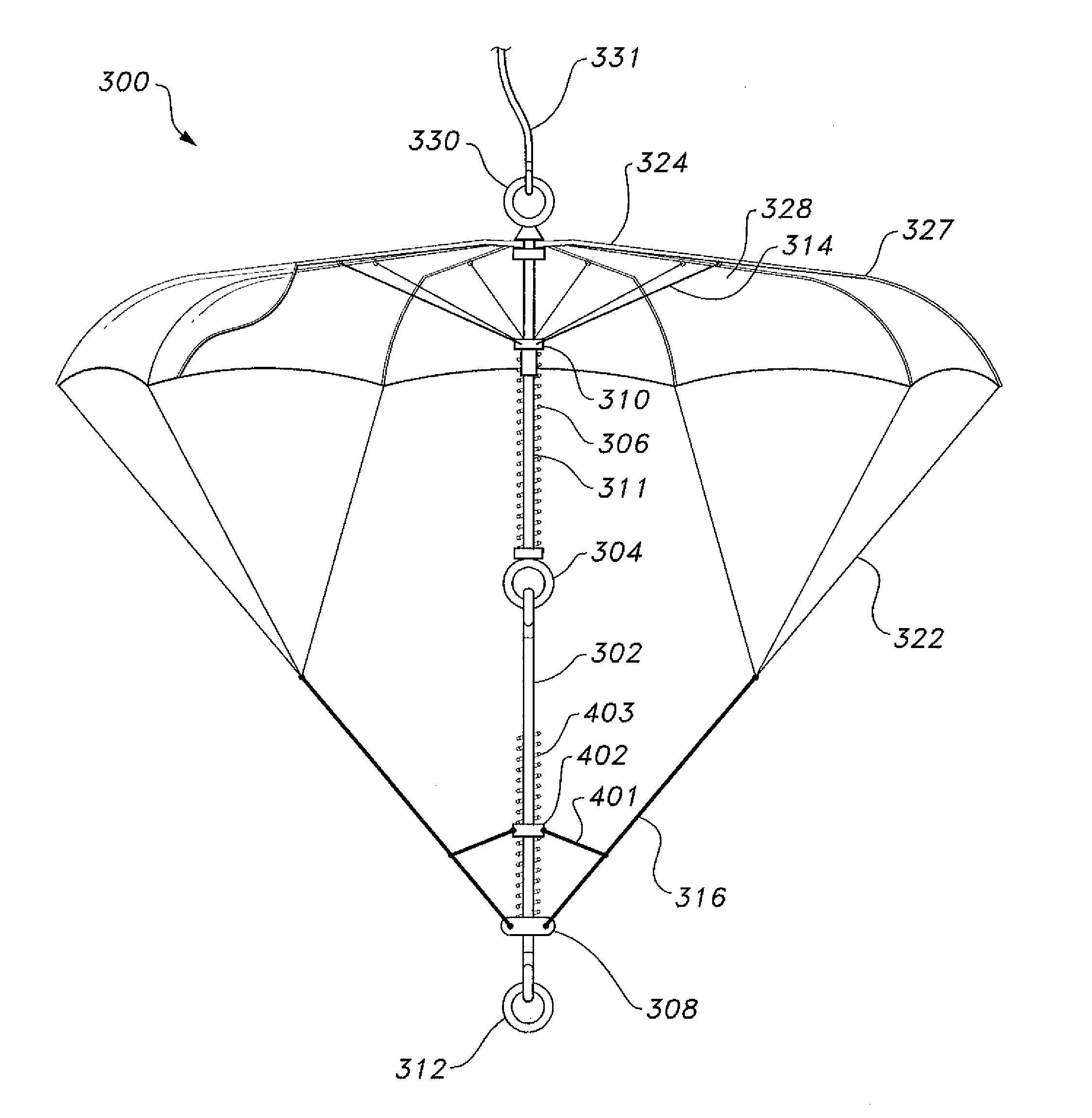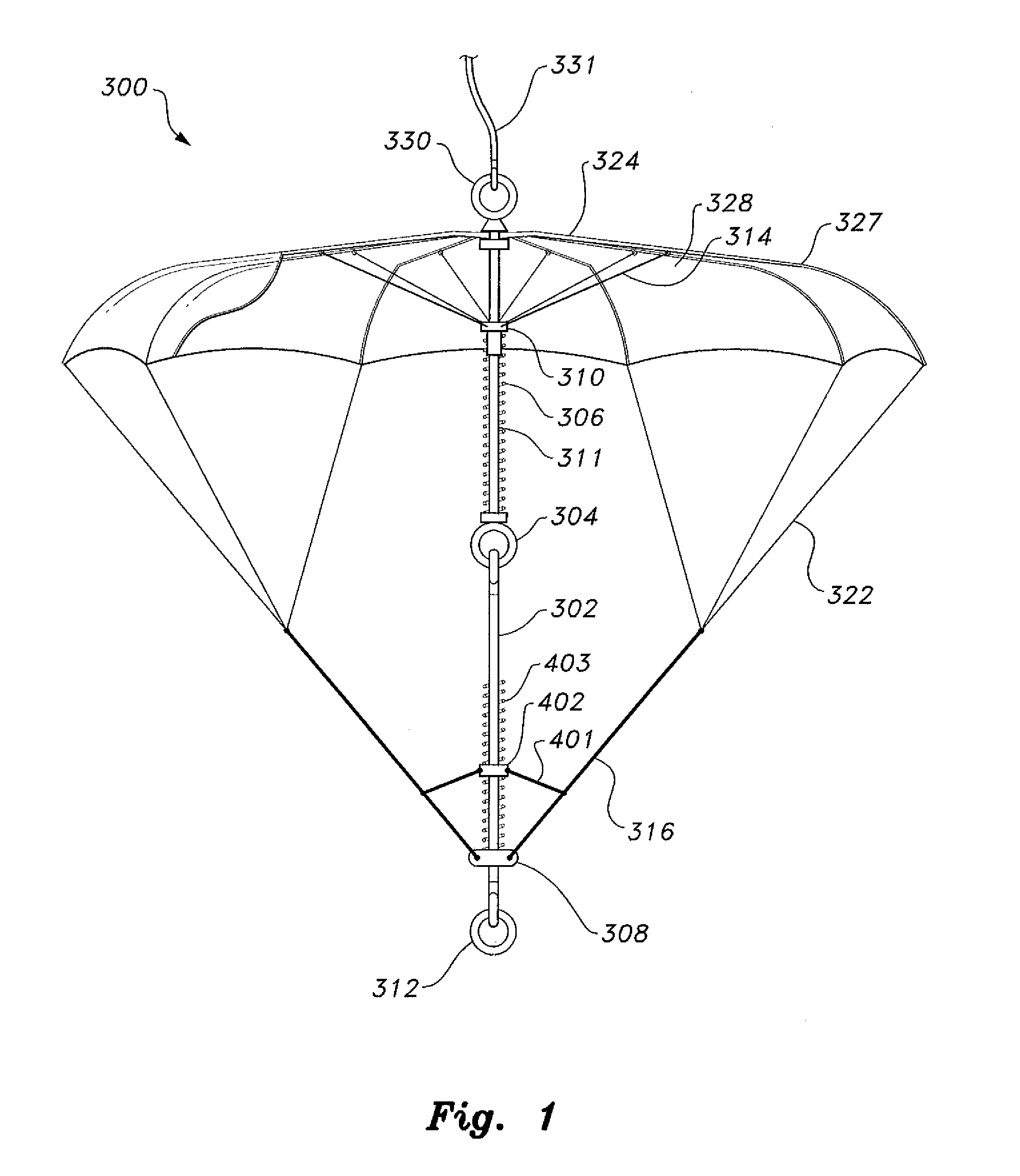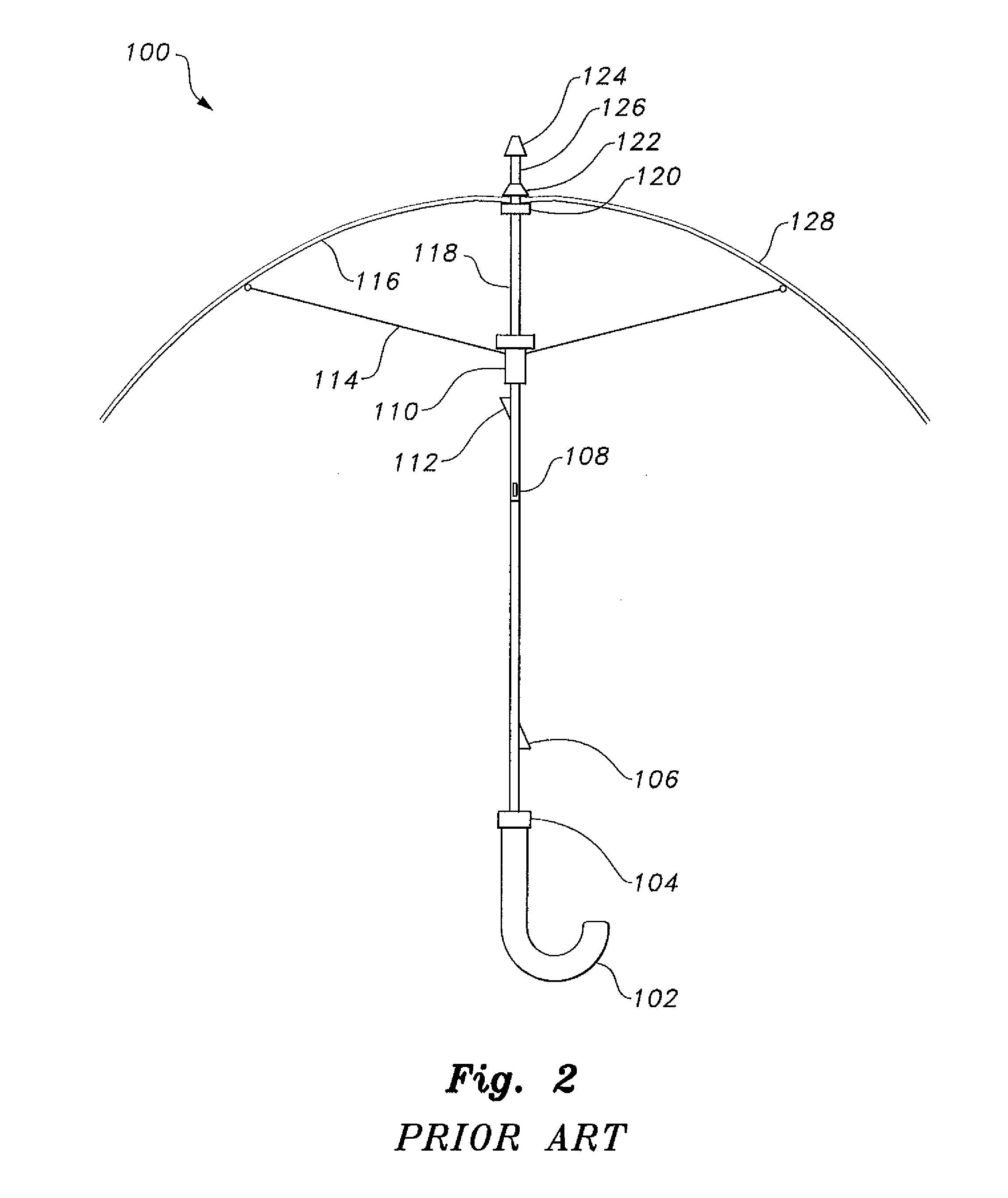Mechanically opening emergency parachute
a parachute and mechanical technology, applied in the field of parachutes, can solve the problems of increasing drag, slowing down the object, and not retaining the pilot chute after deploymen
- Summary
- Abstract
- Description
- Claims
- Application Information
AI Technical Summary
Benefits of technology
Problems solved by technology
Method used
Image
Examples
Embodiment Construction
The mechanically opening emergency parachute 300, shown in FIGS. 1 and 8, is similar to the prior art mechanically opening parachute 10 of FIG. 7, however telescopic tube 18 is replaced by a tube 311, having opposed upper and lower ends, with a suspension cord 302 being tied or otherwise secured to lower end 304 thereof. It should be understood that suspension cord 302 may, alternatively, be removed. However, in the preferred embodiment, suspension cord 302 is secured to lower end 304. A ring or other mount 312 is provided on the lower end of the suspension cord 302, as shown, allowing for attachment of a harness, such as harness 12 of FIG. 7. The upper end 330 of tube 311 has a similar mount formed thereon, allowing for a cord or line 331 to be secured thereto. The cord or line 331 attached to upper end 330 may be fixed, at its other end, to the lower mount 312 of a second parachute 300, thus allowing multiple users to escape from an emergency situation together (as shown in FIG. 9...
PUM
 Login to View More
Login to View More Abstract
Description
Claims
Application Information
 Login to View More
Login to View More - R&D
- Intellectual Property
- Life Sciences
- Materials
- Tech Scout
- Unparalleled Data Quality
- Higher Quality Content
- 60% Fewer Hallucinations
Browse by: Latest US Patents, China's latest patents, Technical Efficacy Thesaurus, Application Domain, Technology Topic, Popular Technical Reports.
© 2025 PatSnap. All rights reserved.Legal|Privacy policy|Modern Slavery Act Transparency Statement|Sitemap|About US| Contact US: help@patsnap.com



